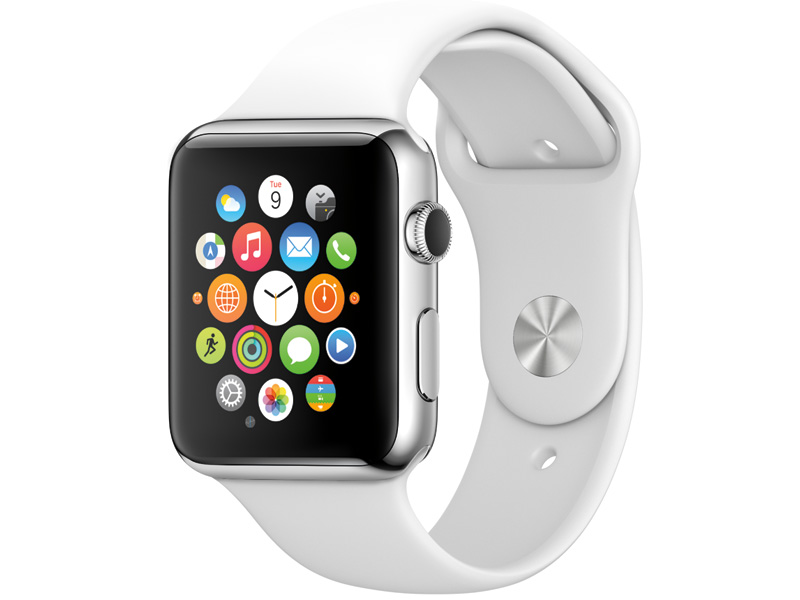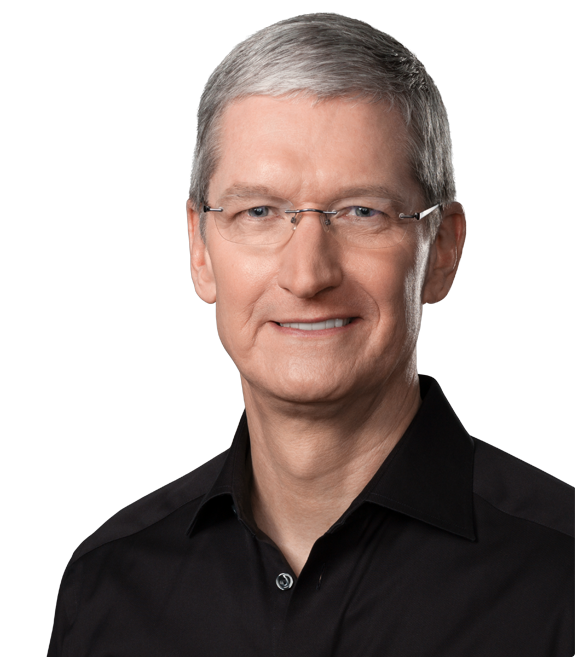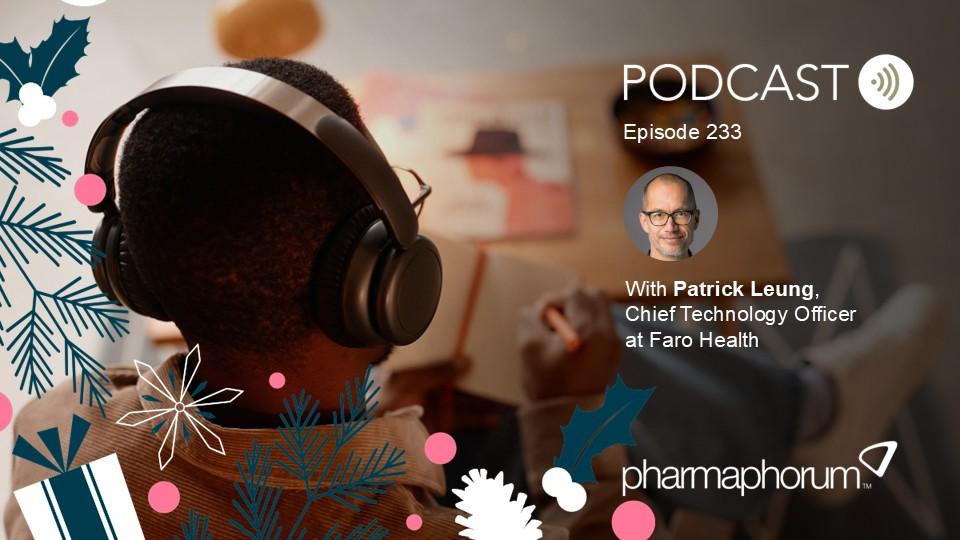Should pharma be envious of Apple?

Apple has just recorded the biggest profits in corporate history – how did it achieve this, and does pharma measure up in terms of innovation and marketing?
Apple recently announced a profit of $18 billion for the last three months of 2014, a feat which represented the biggest profit recorded in corporate history.
The results broke a previous record set by oil company ExxonMobil, when it achieved profits of $15.9 billion in 2012, and confirmed the Californian tech giant as the world's most successful company.
The firm's sales in the period were up 30 per cent to $74.6 billion, and those profits of $18 billion represented growth of 37 per cent.
To put this into some context with the pharma sector, profits at Johnson & Johnson (J&J) for the same period were (an otherwise very impressive) $2.5 billion - seven times smaller than Apple's. And in terms of revenues, it took J&J 12 months to earn almost exactly the same $74 billion Apple raked in over just three months.
So what was behind Apple's surge of success in late 2014? By far the biggest contributor was the iPhone 6 and the bigger screen iPhone 6 Plus, which proved to be a stratospheric hit, particularly in China.
Chief executives at other major corporations could be forgiven for being envious of the success of Apple, and its chief executive Tim Cook. One might argue this is particularly the case with big pharma companies, who typically invest far more money into research and development than Apple, but can't match the profits of the firm based in Cupertino, California.
So should pharma be envious of Apple's success, and what, if anything, can pharma learn from Apple?
I would argue that, despite the jaw-dropping profits achieved by Apple, and its dominance in its chosen market, pharma shouldn't be envious of its riches – but that requires one to look at the bigger picture. Firstly, and perhaps most importantly, the wider value to society of pharma and biotech breakthroughs far outweighs the latest iteration of sleek smartphones.
Secondly, as many pundits have pointed out, it's not clear that Apple can sustain its market-leading innovation for much longer, and could even face the kind of decline its once all-conquering rival Microsoft has suffered.
Nevertheless, some comparisons between the pharma and biotech sector with Apple are intriguing.
Cracking China's market
The potential expansion of the world's emerging markets is what Apple is relying on for much of its future growth. This is equally true for pharma, and China is, of course, the most lucrative prize.
Until recently, Apple has struggled to make in-roads into the Chinese market, but the launch of the new bigger-screen iPhone 6 Plus has seen it leapfrog its competitors, the company overtaking China's home-grown Xiaomi to become the country's largest smartphone seller in the last quarter.
Revenues from China reached $16.1 billion in the quarter, up 70 per cent on last year, and fast closing in on Europe, where Apple earned $17.2 billion in the period.
The parallels here with pharma are close: Pfizer saw its revenues from emerging markets reach $11.49 billion in 2014, or 23 per cent of global sales. This growing share will see emerging markets overtake Pfizer's revenues from Europe in 2015 for the first time ever.
The success of the new iPhone in China is due in large part to Apple's partnership with China Mobile, which has 760 million subscribers.
This huge and growing middle class, willing and able to pay a monthly fee to have the latest smartphone, could be an encouraging sign for pharma: if more of these well-off consumers could be convinced to take out health insurance, the market for new patent-medicines would also accelerate rapidly. However China's government is investing heavily in the provision of healthcare for all, suppressing demand for insurance to some extent.
Also, growing revenues in China is not as straightforward as it may seem: regulation and increasingly strong competition from local companies make life difficult in either tech or pharma.
Reliance on one product
One particular worry for Apple in sustaining its growth in the long term is its reliance on the iPhone.
In pharma, the most obvious comparison is AbbVie, which is continuing to see its sales and profits increase thanks to Humira. The anti-TNF drug has been a huge success, but in representing 63 per cent of its total sales in 2014 of just under $20 billion, AbbVie has become dangerously reliant on this single product. A number of biosimilar versions of the drug are now in late-stage development, which will mean AbbVie will see its revenues eroded within a few years.
Apple's reliance on the iPhone is even greater – the latest figures show it represents 69 per cent of the firm's income.
Like AbbVie, Apple looked to an acquisition in 2014 to help respond to such pressures on its future growth (though unlike AbbVie, the sale went through). Apple's online music service iTunes has been hugely successful since its launch in 2003, but now consumers are switching away from purchasing downloads to using music 'streaming' sites such as Spotify. The firm responded by buying up the Beats company in April last year for $3 billion; best known for its trendsetting headphones, Beats also has a well-regarded music streaming service, which could help Apple maintain its dominance in the sector – but it will have to act fast to lure consumers away from Spotify and other rivals such as Google Play.

The Apple Watch, expected to be launched in April
Apple's next big launch is the Apple Watch, which is due for launch in April.
What makes this of particular interest to pharma is that it represents Apple moving into the healthcare market, most specifically, the burgeoning health and wellness 'wearables' market.
In addition to the usual digital watch functions, Apple's product will come with a range of health and fitness apps which, it says, "can help people lead healthier lives" and can be paired with an iPhone via Wi-Fi or Bluetooth.
Significantly, the US FDA has recently declared that it won't regulate wearables – i.e. it won't consider them as medical devices, giving companies like Apple greater freedom to update its products without regulatory approval – perhaps one area in which pharma might be permitted a fleeting moment of envy.
Apple is still advancing in the development of apps, and healthcare is ripe for innovation. HealthKit is its foray into personalised health and wellness tracking, and some US hospitals are already piloting its use in tracking chronic conditions such as diabetes and hypertension. Recent reports found Apple ahead of Google and Samsung, who have their own rival systems but have not yet forged partnerships with hospital groups, as Apple has.
Not first to market, but best in class
HealthKit may prove to be an example of Apple being a genuine pioneer in a brand new field. One of the remarkable things about its success until now is that it has rarely been first to market with a new device – the iPod wasn't the first MP3 player, the iPhone wasn't the first smartphone and the iPad wasn't the first tablet – rather, they all transformed the design, functionality and appeal of the devices.
In terms of smartwatches, Apple is once again not the first to market: Samsung launched its Galaxy Gear watch as long ago as September 2013, but the product has failed to create that must-have buzz that is Apple's happy knack.
That said, many analysts doubt the Apple Watch can replicate the frenzy of interest seen at the launch of successive iPads and iPhones.
Beyond wearables, it is difficult to see which of the emerging tech trends will be the biggest hits, and when the technology will go truly mainstream. There is certainly lots of buzz around exciting technologies such as the 'internet of things', driverless cars and robotics, but Apple isn't among the leaders in these fields, and may end up on the receiving end of 'disruptive innovation' in the coming years, just as it has profited from it over the last decade.
R&D spending
Having now grown into a huge corporation, with investors expecting it to maintain stellar profits, perhaps it is Apple that can learn something from big pharma's experience. Faced with expectation of sustained growth, and sitting on huge reserves of cash, pharma companies threw more and more money at R&D in the 2000s, but saw no commensurate increase in new products approved.
In contrast, Apple has been able to keep the proportion of its sales reinvested in R&D very low.
It has seen its R&D spending rise steeply over the last few years, up to $6 billion on research in 2014. This represented a near doubling of spend in two years – but this was still just 3 per cent of the company's net sales.
Contrast this with the $9.08 billion Novartis spent in 2014 on R&D – more than 17 per cent of its revenues.
Interestingly, Apple's R&D expenditure is also far lower than its nearest rival in mobile devices, Samsung. The South Korean company spent $13.4 billion on R&D in 2013, equivalent to 6.4 per cent of its total revenue, though time will tell if Samsung's far greater outlay will reap benefits.
Among the many memorable pronouncements Steve Jobs made during his life was one oft-quoted remark on innovation, and how much it costs:
"Innovation has nothing to do with how many R&D dollars you have. When Apple came up with the Mac, IBM was spending at least 100 times more on R&D. It's not about money. It's about the people you have, how you're led, and how much you get it."
This quote may hold the key to potential future problems for Apple: while there are many talented thinkers, technologists and designers at Apple, Jobs has so far proved irreplaceable, no-one 'gets it' the way he did.
Jobs had always maintained that Apple should keep tightly focused on doing just a few things well. Yet without his leadership, this may prove to be a straitjacket for the firm. This strategy is markedly different to that pursued by his rival Larry Page, the chief executive of Google, who is investing in a dizzying array of ambitious projects and technologies. Significantly, Apple has shown little inclination to invest in basic research in entirely new fields, rather than making advances and refinements within existing fields.
This narrow focus could spell trouble for Apple if it can't adapt quickly enough. However if it is running out of ideas, it certainly isn't running out of cash. The company is sitting on around $155 billion in cash reserves, an enormous sum which gives it many options, including major acquisitions of fresh innovative companies – a model very familiar to pharma.
While this strategy might help Apple maintain its shareholder-pleasing performance for some years, if it undermines its fundamental focus on developing uniquely exciting new products, the rot may set in at Apple.
Pfizer is the most obvious parallel in pharma: it became the dominant pharma company thanks to its best-in-class brand Lipitor, but its pursuit of growth through mergers and cuts has also bequeathed it with an underwhelming innovation pipeline. Pfizer has just used some of its own multi-billion cash reserves to buy up Hospira in pursuit of a break-up strategy: one that might appeal to accountants and shareholders, but it's not a strategy that will enable it to be the dominant force in pharma.
The comparison between Pfizer and Apple is particularly striking: in truth, it is in marketing where both companies have excelled above all else, with 'technology' or 'innovation' a necessary, but somewhat less important, component of their success.

Apple's chief executive Tim Cook
So while Apple is indeed riding high today, it has an unenviable task. Tim Cook must ensure the company lives up to shareholder expectations, while staying true to Jobs' precise vision of the company, and maintaining its status as the world's 'must have' brand: aims which may prove difficult to reconcile.
About the Author:
Andrew McConaghie is pharmaphorum's managing editor, feature media.
Contact Andrew at andrew@pharmaphorum.com and follow him on Twitter.
Have your say: To what extent should pharma be jealous of Apple?
Read more from Andrew McConaghie:
Cancer Drugs Fund: winners and losers in pharma, but a long-term fix is needed










